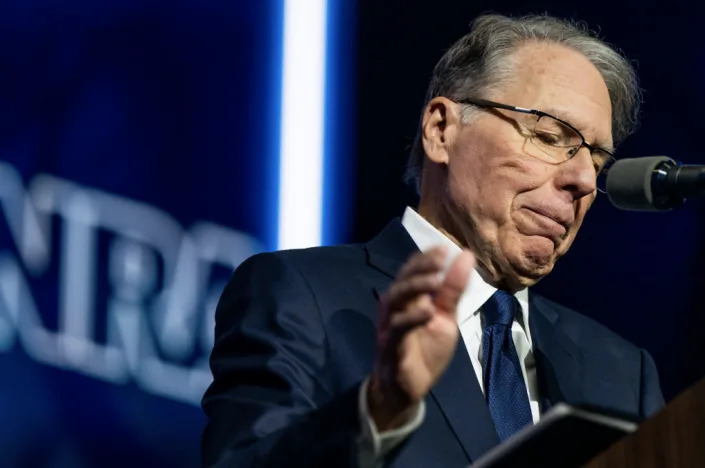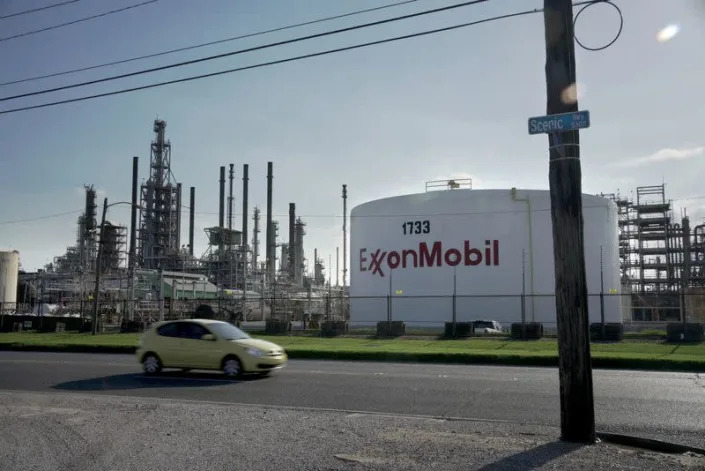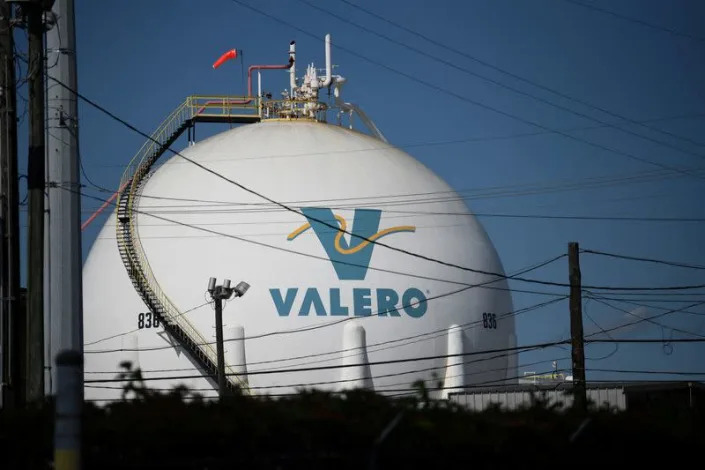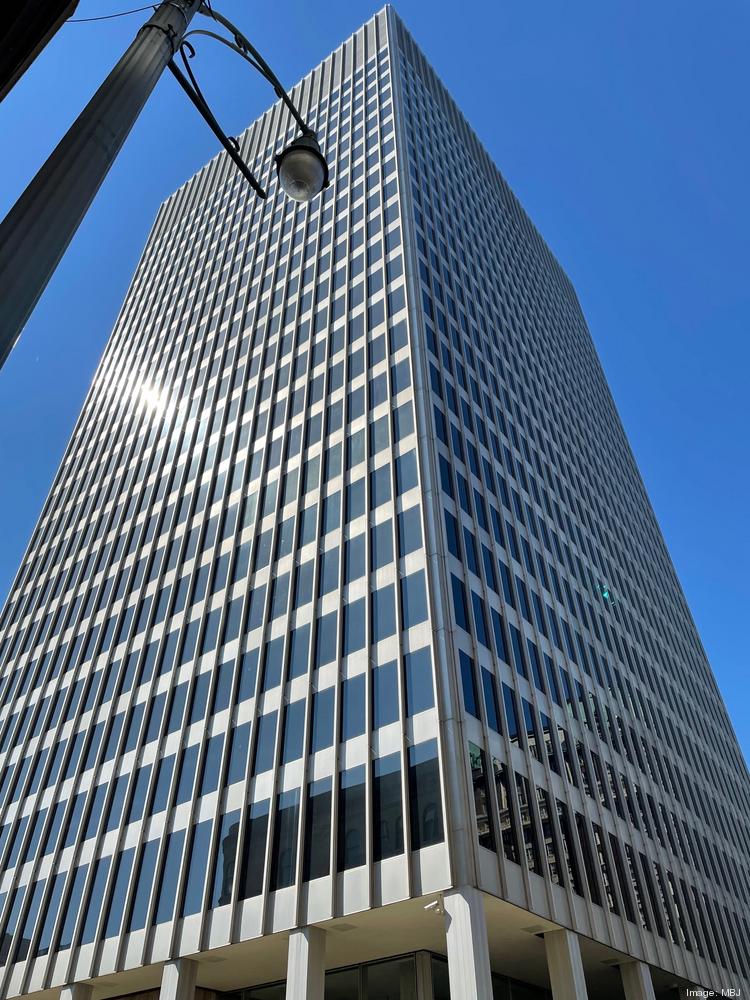John Stoehr
June 03, 2022

Wayne LaPierre speaking at the 2018 Conservative Political Action Conference (CPAC) in National Harbor, Maryland. (Gage Skidmore/Flickr)
USA Today ran a frontpage story this morning about “the gun lobby” fattening its impact “far beyond the NRA.” It rounds up the various groups united in opposition to gun-law reform. Altogether, last year these organizations spent nearly $16 million on lobbying, a record.
The story was on the frontpage, because spending by “the gun lobby” is topical. The president, in mourning two teachers and 19 children shot to pieces in the Uvalde massacre, demanded the Republicans, especially in the Senate, stand up to “the gun lobby.” The USA Today report provided valuable context. There’s more here than the NRA.
I’m somewhat blind to numbers. I don’t usually pay attention to dollar amounts. Today, however, I happened to notice that while $16 million is a lot to normal people, to the very obscenely rich, who can spend such vast sums as to bend political reality in their favor, it’s pocket change.
As if to provide a point of comparison, another story in today’s paper was about Kremlin capo Andrey Melnichencko, who lost a super-yacht to international sanctions against Russia, but managed to save another. The former is worth $600 million. The latter is worth $300 million.
That’s serious money. Standing up to a “gun lobby” that’s spending a $16 million a year is one thing. A billion bucks, though, is another. One of these the Republicans can weather easily. The other would hurt so much you’d never ever again consider standing up to “the gun lobby.”
My point here is that the NRA and the others are not so powerful as to justify the Republicans’ stand against gun-law reform for the last decade. What’s driving them isn’t money so much as “gun culture,” which is a polite way of describing a white-power reaction to the forces of liberal democracy threatening the “natural order of things.”
A second point
The NRA etc. are not so powerful as to back conservative Senate Democrats into a corner. Joe Manchin, as well as three or four other Democratic senators, wouldn’t lose much by standing up to them.
Yet they have not.
I think they understand that “the gun lobby” is for them a convenient fiction. Instead of demanding that their respectable white constituents acknowledge the political advantages inherent in being respectable white constituents – by calling “gun culture” a manifestation of white power and by calling gun control a manifestation of liberal democracy – Democratic Senators can instead blame “the gun lobby” for Washington’s impotent reaction to a decade of murdered innocents.
Ditto for Joe Biden.
I would presume that the president knows perfectly well what I’m spelling out here: that blaming “the gun lobby” is doublespeak used to avoid offending white supporters steeped in, to paraphrase Neil Meyer, the deep American reverence for guns and mythological manliness.
That’s my second point. The same white-power impulses pushing the Republicans against gun-law reform are the same white-power impulses pushing just enough Democratic senators away from it. This framing is so dominant as to constitute our political reality, which is another way of saying that racism constitutes our political reality.
The result, as long as the Senate filibuster remains intact, is congressional impotence in the face of a decade of murdered innocents. The result is a country in which the pernicious dread and fear of terrorism anytime anyplace colonizes the American mind.
A third point
To their immense credit, my left-liberal brethren are empurpled with frustration and rage. They cannot accept and will never accept a present time that’s bound by the white-power parameters of the past.
That’s good. We must keep fighting.
But let’s not let the political advantages inherent in being white liberals blind us to the resilience of those deeply rooted political advantages. (I do not intend to explain to nonwhite liberals what they already know.)
Desperate for action of any kind, white liberals are loudly and in increasing numbers calling on Biden to lean harder on Joe Manchin and the other conservative Senate Democrats. Force them to take a stand against “the gun lobby,” they say. Force them to carve out an exception to the filibuster to pass a weapons ban and other reforms.
And if they balk, well, at least the base of the Democratic Party, when it comes time to vote in November, will know exactly who to blame.
As The Atlantic’s Molly Jong-Fast said Wednesday: “A win on guns would not only protect children; it would shore up Biden’s anemic poll numbers and excite the Democratic base. If Democratic voters don’t show up this fall, it will be because they’ve lost faith in Democrats’ ability to deliver. And yet, Democrats seem to be terrified to deliver.”
Molly is far from alone. White liberals have been calling on party leaders to do something in increasing numbers and with increasing volume. But due to their desperation (I’m being generous here), white liberals have not thought enough about the true character and deep history of the problem. “Do something” is a variation of “the gun lobby.”

It’s a convenient fiction.
We could and should demand that white liberals acknowledge the historic political advantages inherent in being white liberals. “Exciting the base” in November would therefore be a moot point. The base would already be crystal clear about who’s to blame and what. But that’s hard work, even for – perhaps especially for – white liberals.
Instead, it’s easier to demand party leaders do something, anything, saying if they don’t, the base of the Democratic Party won’t turn out.
Yet, as I said, the base should already know who’s to blame and what. That is, if it’s not blinded by the white-power impulses involved on account of benefitting from those very same white-power impulses. Blaming party leaders is the path of least resistance. It’s a convenient fiction white liberals use to avoid offending other white liberals.
In doing so, white liberals end up reinforcing a framing of the issue that’s so dominant as to constitute our political reality, which is another way of saying racism constitutes our political reality.
As long as the pernicious fear of terrorism anywhere anytime colonizes our minds, none of us, no one, is free. White liberals can choose freedom from history. They must start with themselves.
John Stoehr is a fellow at the Yale Journalism Initiative; a contributing writer for the Washington Monthly; a contributing editor for Religion Dispatches; and senior editor at Alternet. Follow him @johnastoehr.












